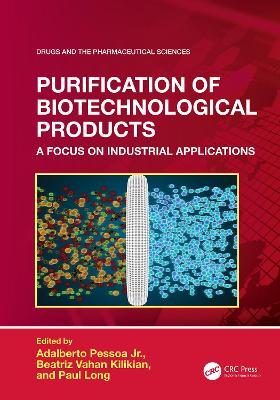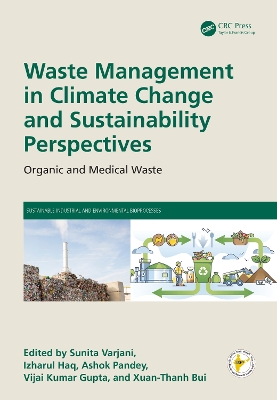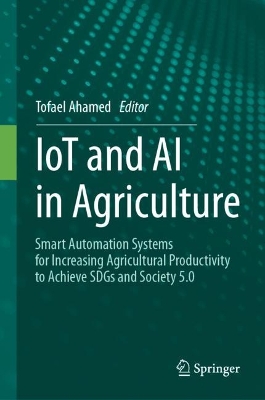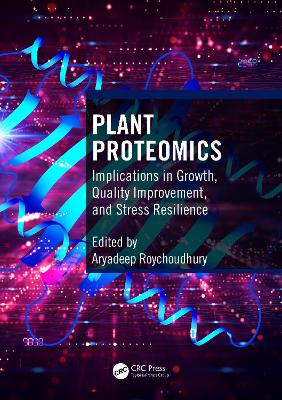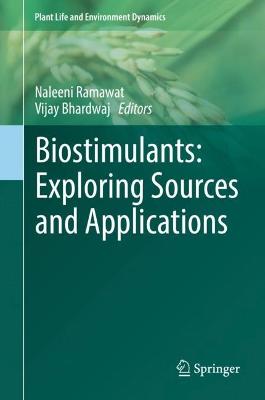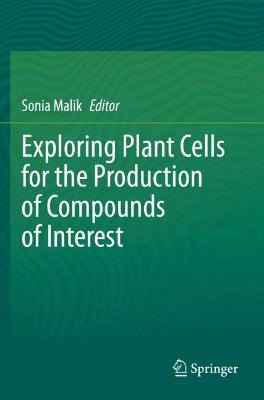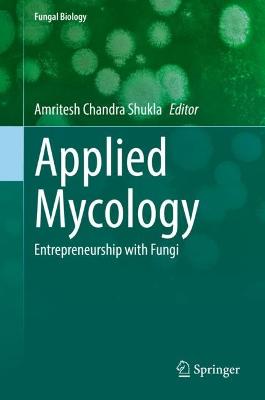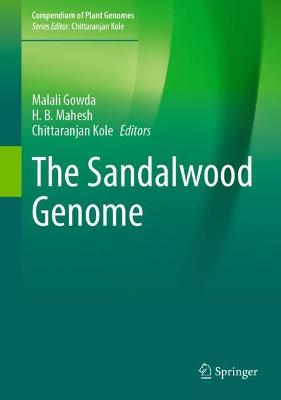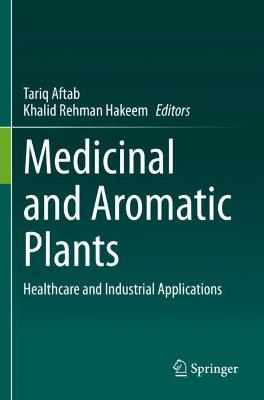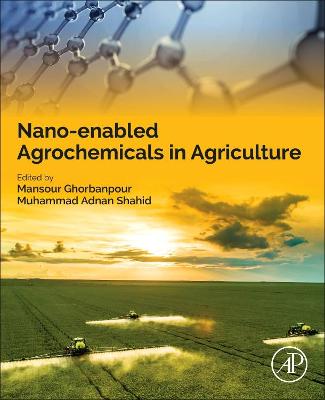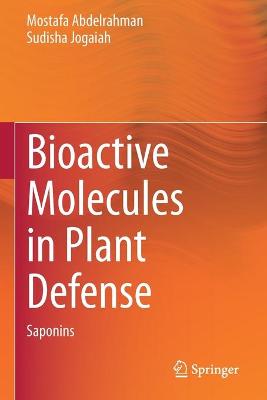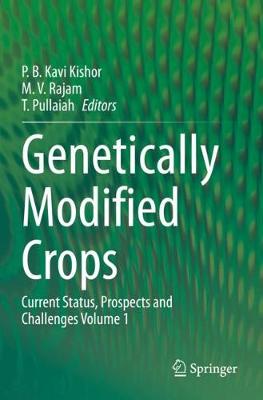Nutritional Quality Management of Forages in the Himalayan Region
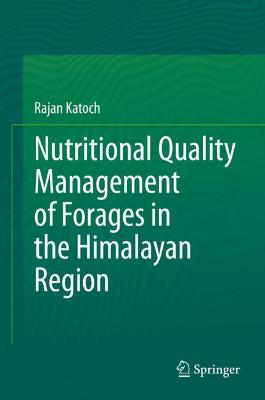 portes grátis
portes grátis
Nutritional Quality Management of Forages in the Himalayan Region
Katoch, Rajan
Springer Verlag, Singapore
04/2022
590
Dura
Inglês
9789811654367
15 a 20 dias
1198
1.1. Introduction
1.2. Forage quality
1.3. Influence of forage quality on livestock health and productivity
1.4. Forage production and Livestock productivity Inter linkage
1.5. Biodiversity in forages of Himalayan region
1.6. Nutritional diversity in forages
1.7. Regional imbalances in forage availability and nutrition
1.7.1. Scenario of demand and supply status of forages
1.8. Insight of livestock production and productivity
1.8.1. National perspective
1.8.2. Himalayan perspective
2. Impact of forage availability on livestock rearing and socio- economic aspects
2.1. Livestock rearing- An indispensable component of hill Agriculture
2.2. Importance of livestock production on rural economy of Himalayan region
2.2.1. Contribution of livestock to National and Regional economy
2.2.2. Socio-economic status of farmers depending on livestock based agriculture
2.3. Constraints in achieving optimal livestock productivity
2.4. Conventional practices of livestock feeding
2.5. Effect of nutritionally compromised forages on livestock productivity
2.6. Scope of improving animal productivity with nutritional species
3. Forage resources and productivity in Himalayan region
3.1. Forage grasses
3.2. Forage legumes
3.3. Cereal forages
3.4. Range forages
3.5. Fodder trees and shrubs of Himalayan region
3.6. Crop residues
3.7. Grasslands, pastures and Rangelands of Himalayan region
3.7.1.Grasslands and pasture of North-western Himalayan region
3.7.2.Grasslands and pasture of Eastern Himalayas
3.7.3.Rangelands
3.7.4. Other important feed resources in Himalayan region
3.8. Production and productivity of forages in Himalayan region
3.8.1. Forage resources and their productivity in N-W Himalayas
3.8.1.1.Major forage resources and their productivity in Himachal Pradesh
3.8.1.2. Major forage resources and their productivity in Uttarakhand
3.8.1.3. Major forage resources and their productivity in Jammu & Kashmir
3.8.2. Forage resources and their productivity in Eastern Himalayas
3.9. Grazing patterns and maintenance of grasslands and pasture in Himalayan region
3.10. Multiple cropping systems influencing forage nutritional value
4. Constraints in fodder production in Himalayan region
4.1. Land scarcity
4.2. Topographic constraints
4.3. Harsh environmental conditions
4.4. Climate change
4.5. Increasing population of unproductiveanimals
4.6. Uncontrolled grazing
4.7. Lack of management and conservation practices
4.8. Lack of improved varieties
4.9. Lack of knowledge of non-conventional fodder
4.10. Poor credit and marketing facilities
5. Factors influencing forage nutritional quality
5.1. Plant factors affecting forage quality
5.1.1. Stage of maturity
5.1.2. Anti-quality factors
5.1.3. Species difference
5.1.4. Soil fertility/fertilizer application
5.1.5. Plant composition
5.1.6. Variety (cultivar)
5.1.7. Plant morphology
5.2. Animal factors
5.2.1. Palatability
5.2.2. Intake
5.2.3. Digestibility
5.3. Environmental factors
5.3.1. Water stress
5.3.2. Temperature
5.3.3. Solar radiation
5.3.4. Photoperiod
5.3.5. Shading
5.3.6. Altitude
5.4. Effect of seasonal dynamics on nutritional quality of forages
5.4.1. Seasonal dynamics in nutritional quality of forage grasses and legumes
5.4.2. Seasonal dynamics in nutritional quality of forage trees
5.5. Effect of foliar diseases and insect-pests on quality of forages
5.6. Changes in forage quality during harvest and storage
5.6.1. Respirational losses during harvest
5.6.1.1. Dry matter and nutrient losses
5.6.2. Mechanical losses
5.6.2.1. Losses during Mowing and Conditioning
5.6.2.2. Losses during Raking
5.6.2.3. Losses due to Baling and chopping
5.6.3. Changes in forage quality during storage
5.6.3.1. Quality loss during inside storage
5.6.3.2. Quality loss during outside storage
6. Forage genetic resources (FGR) of region
6.1. An introduction - Forage genetic resources
6.2. Role of Forage Plant Genetic Resource conservation
6.3. Forage germplasm conservation and evaluation
6.3.1. Breeding for nutritional quality enhancement of forage crops
6.3.2. Varietal development with nutritional attributes
6.3.3. Research studies to evaluate forage germplasm
6.4. Breeding for nutritional quality enhancement of forage crops
6.5. Varietal development with nutritional attributes
7. Forage production and quality improvement
7.1. Forage research: National and Regional scenario
7.2. Nutritional quality enhancement of forage crops
7.3. Conventional breeding approaches
7.4. Breeding strategies for forage crop improvement
7.4.1. Plant introduction
7.4.2. Plant Selection
7.4.3. Polycrossing
7.4.4.Development of synthetic varieties in forage crops
7.4.5. Mutation breeding
7.4.6. Apomixis
7.4.6. Wide hybridization
7.4.7.1. Festuca-Lolium complex
7.4.7.2. Bajra-Napier hybrids
7.4.7.3. Lolium-Dactylis hubridization
7.4.7.4. Trifolium interspecific hybridization
7.5. Implication of modern strategies in development of improved forage crop varieties
7.5.1. Embryo rescue
7.5.2. Callus culture
7.5.3. Meristem culture
8. Nutritional and anti-nutritional constituents in forages
8.1. Nutritional and anti-nutritional constituents of forages and their importance in animal nutrition
8.1.1. Nutritional constituents
8.1.1.1. Dry matter
8.1.1.2. Crude protein
8.1.1.3. Amino acids composition and protein quality
8.1.1.4. Crude fiber
8.1.1.5. Crude fat
8.1.1.6. Fatty acids
8.1.1.7. Ash
8.1.1.8. Nitrogen free extract (NFE)
8.1.1.9. Acid detergent insoluble nitrogen (ADIN)
8.1.1.10. Water soluble carbohydrates (WSC)
8.1.1.11. Total digestible nutrients (TDN)
8.1.1.12. Fat soluble micronutrients
8.1.2. Anti-nutritional constituents
8.1.2.1. Neutral digestible fiber (NDF) and Acid detergent fiber (ADF)
8.1.2.2. Lignin
8.1.2.3. Polyphenols
8.1.2.4. Alkaloids
8.1.2.5. Saponins
8.1.2.6. Cyanogens
8.1.2.7. Oxalates
8.1.2.8. Protease and ?-amylase inhibitors
8.1.2.9. Nitrates
8.1.2.10. Non protein amino acids
8.1.2.11. Crop specific anti-nutrients
9. Nutritional quality estimation of forages
9.1. Destructive methods for forage quality estimation
9.1.1. The Weende scheme
9.1.2. The Van Soest system
9.2. Non-destructive methods for forage quality estimation
9.2.1.Near infrared reflectance spectroscopy (NIRS) technique
9.3. In vivo and laboratory methods for estimation of forage quality
9.3.1. Laboratory methods for forage quality parameters
9.3.1.1. Moisture
9.3.1.2. Total dry matter determination
9.3.1.3. Crude protein
9.3.1.4. NDF
9.3.1.5. ADF
9.3.1.6. Crude fiber
9.3.1.7. Ether extract
9.3.1.8. Carbohydrates
9.3.1.9. Ash content
9.3.1.10. True protein and non-protein nitrogen (NPN
9.3.1.11. Starch
9.3.1.12. ADL
9.3.1.13. Cellulose
9.3.1.14. Silica
9.3.1.15. IVDMD
9.3.1.16. In sacco dry matter digestibility
9.3.2. In vivo method for determination of digestibility of forages
10. Nutritional quality of major forage grasses of Himalayan region
10.1. Range forages
10.1.1. Guinea grass (Panicum maximum)
10.1.2. Bermuda grass (Cynadon dactylon)
10.1.3. Nut grass (Cyperus rotundus)
10.1.4. Chizz grass (Imperata cylindrica)
10.1.5. Dallis grass (Paspalum dilatatum)
10.2. Cultivated forage grasses of Himalayan region
10.2.1.Tall fescue (Festuca arundinacea)
10.2.2. Perennial ryegrass (Lolium perenne)
10.2.3. Golden timothy (Setaria spp.)
10.2.4. Orchard grass/ Cock's foot (Dactylis glomerata)
10.2.5. Elephant grass (Pennisetum purpureum)
10.2.6. Bajra x Napier hybrids (BN hybrids)
10.3. Cereal fodders
10.4.1. Fodder maize (Zea mays)
10.4.2. Oats (Avena sativa)
10.4.3. Sorghum (Sorghum bicolor)
10.4.4. Barley (Hordeum vulgare)
11. Nutritional quality of major forage legumes of Himalayan region
11.1. Alfalfa (Medicago sativa L.)
11.2. Berseem (Trifolium alexandrium L.)
11.3. Trifolium species
11.4. Birdsfoot trefoil (Lotus corniculatus L.)
11.5. Caribbean stylo (Stylosanthes hamata)
11.6. Cowpea (Vigna unguiculata L.)
11.7. Sainfoin (Onobrychis vicifolia L.)
11.8. Rice bean (Vigna umbellata)
11.8.1. Fodder production potential of ricebean
11.8.2.Biochemical composition of rice bean forage
11.8.2.1Dry matter
11.8.2.2. Crude protein
11.8.2.3.Crude fiber
11.8.2.4. Total soluble carbohydrates
11.8.2.5.Ash content
11.8.2.6. Cell wall constituents
11.8.3. Anti-nutritional constituents in rice bean forage
11.8.4. Nutritional superiority of rice bean forage over other forage legumes
11.8.5. Rice bean seeds in animal feeding
12. Nutritional quality of tree fodder of Himalayan region
12.1. Importance of tree fodder
12.1.1. Nutritional fodder resource
12.1.2. Dry season supplement
12.1.3. Multipurpose uses
12.2. Tree fodder-Alternative source of quality fodder
12.3. Nutritional composition of fodder trees of Himalayan region
12.4. Anti-nutritional components of fodder trees
12.5. Lean season forages and their nutritive quality
13. Prospects of non-conventional feed resources of Himalayan region
13.1. Significance of non-conventional feed resources in livestock feeding
13.2. Source and availability of NCFR
13.2.1. Fruit and vegetable wastes
13.2.2. Trees and shrubs
13.2.3. Agroforestry
13.2.4. Agro-industrial by-products (AIBP)
13.2.5. Weeds
13.3. Nutritive Value of NCFR
13.3.1. Fruits and vegetables
13.3.2. Trees and shrubs
13.3.3. Crop byproducts
13.3.4. Weeds
13.3.5. Azolla
13.4. Constraints in using non-conventional feed resources as a potential livestock feed
13.5. Future possibility of using NCFR in livestock feeding
14. Improving quality and digestibility of crop residues
14.1. Crop residues and livestock feeding
14.2. Nutritive value of important crop residues available in Himalayan region
14.3. Barriers in the effective utilization of crop residues as sole livestock feed
14.4. Strategies for improving quality and digestibility of crop residues
14.4.1. Physical treatment
14.4.1.1. Chopping and grinding
14.4.1.2. Pelleting and cubing
14.4.1.3. Irradiation
14.4.1.4. High pressure/high temperature steam treatment
14.4.1.5. Ensiling
14.4.2. Chemical treatment
14.4.2.1. Ammoniation of crop residues
14.4.2.2. Alkali treatment
14.4.2.3. Acid hydrolysis
14.4.3. Biological treatment
14.4.3.1. Lignocellulolytic organism treatment
14.4.3.2. Fungal treatment
14.4.3.3. Bacterial treatment
14.4.3.4. Yeast treatment
14.4.4. Combined physical and biological treatment
14.4.5. Exogenous enzymatic treatment
14.4.6. Supplementation
15. Improvement in nutritional quality of forages through new biotechnological techniques
15.1. Overview of biotechnological interventions for quality enhancement in forage crops
15.2. Candidate gene approach for nutritional enhancement
15.3. Biotechnological approaches for nutritional quality enhancement of forage crops
15.3.1. Transfer of nutritionally potential genes
15.3.1.1. Prevention of bloat in forages
15.3.1.2. Gene introgression for higher amino acid content
15.3.2. Engineering of metabolic pathways
15.3.2.1. Manipulation of lignin biosynthesis
15.3.2.2. Manipulation of fructan metabolism
15.4. Genomic in situ hybridization and DNA-based genetic marker technology for nutritional enhancement of forage crops
15.4.1. Genomic insitu hybridization (GISH)
15.4.2. DNA based marker technology / Linkage mapping
15.5. Prospects of gene editing techniques for nutritional quality enhancement of forage crops
16. Lignin: possible manipulationsin forages
16.1. Lignin biochemistry
16.1.1. Shikimate pathway
16.1.2. Phenyl propanoid pathway
16.1.3. Monolignol synthesis pathway
16.1.4. Polymerization
16.2. Intricacies of lignin biosynthesis in plant cell wall
16.3. Role of lignin in plant growth development
16.4. Relationship between lignin and digestibility of forages
16.5. Genetic manipulation of lignin biosynthesis for enhanced forage quality
16.5.1. RNAi mediated manipulation of lignin biosynthesis
16.5.1.1. Alteration of S-adenosylhomocysteine (SAH) levels for alteration lignin biosynthesis
16.5.2. Antisense RNA mediated manipulation of lignin biosynthesis
16.5.2.1. Alteration in Lignin monomer ratio
16.5.2.2. Down regulation of cinnamyl alcohol dehydrogenase (CAD)
16.5.2.3. Down regulation of Caffeic acid O-methyltransferase (COMT)
16.5.2.4. Antisense expression encoding cytochrome P450 enzymes
17. Post-harvest processing of forages
17.1. Harvesting stages
17.2. Post-harvest preservation of forages
17.2.1. Hay making
17.2.2. Silage making
17.2.3. Bale silage
17.2.4. Haylage
17.2.5. Chaffing of fodder
17.3. Packaging and storing
17.3.1. Baling of hay/straw
17.3.2. Pelleting
17.3.3. Densified complete feed block
17.4. Transporting and Stacking practices
18. Challenges and opportunities in forage and livestock production in Himalayan region
18.1. Management of grazing resources
18.2. Alternate land use systems
18.3. Arable land utilization
18.4. Forage crop breeding
18.5. Livestock breeding programme
18.6. Livestock improvement
18.7. Need for biotechnological interventions
18.8. Climate change
18.9. Other challenges
19. Perspective
20. Conclusion
1.1. Introduction
1.2. Forage quality
1.3. Influence of forage quality on livestock health and productivity
1.4. Forage production and Livestock productivity Inter linkage
1.5. Biodiversity in forages of Himalayan region
1.6. Nutritional diversity in forages
1.7. Regional imbalances in forage availability and nutrition
1.7.1. Scenario of demand and supply status of forages
1.8. Insight of livestock production and productivity
1.8.1. National perspective
1.8.2. Himalayan perspective
2. Impact of forage availability on livestock rearing and socio- economic aspects
2.1. Livestock rearing- An indispensable component of hill Agriculture
2.2. Importance of livestock production on rural economy of Himalayan region
2.2.1. Contribution of livestock to National and Regional economy
2.2.2. Socio-economic status of farmers depending on livestock based agriculture
2.3. Constraints in achieving optimal livestock productivity
2.4. Conventional practices of livestock feeding
2.5. Effect of nutritionally compromised forages on livestock productivity
2.6. Scope of improving animal productivity with nutritional species
3. Forage resources and productivity in Himalayan region
3.1. Forage grasses
3.2. Forage legumes
3.3. Cereal forages
3.4. Range forages
3.5. Fodder trees and shrubs of Himalayan region
3.6. Crop residues
3.7. Grasslands, pastures and Rangelands of Himalayan region
3.7.1.Grasslands and pasture of North-western Himalayan region
3.7.2.Grasslands and pasture of Eastern Himalayas
3.7.3.Rangelands
3.7.4. Other important feed resources in Himalayan region
3.8. Production and productivity of forages in Himalayan region
3.8.1. Forage resources and their productivity in N-W Himalayas
3.8.1.1.Major forage resources and their productivity in Himachal Pradesh
3.8.1.2. Major forage resources and their productivity in Uttarakhand
3.8.1.3. Major forage resources and their productivity in Jammu & Kashmir
3.8.2. Forage resources and their productivity in Eastern Himalayas
3.9. Grazing patterns and maintenance of grasslands and pasture in Himalayan region
3.10. Multiple cropping systems influencing forage nutritional value
4. Constraints in fodder production in Himalayan region
4.1. Land scarcity
4.2. Topographic constraints
4.3. Harsh environmental conditions
4.4. Climate change
4.5. Increasing population of unproductiveanimals
4.6. Uncontrolled grazing
4.7. Lack of management and conservation practices
4.8. Lack of improved varieties
4.9. Lack of knowledge of non-conventional fodder
4.10. Poor credit and marketing facilities
5. Factors influencing forage nutritional quality
5.1. Plant factors affecting forage quality
5.1.1. Stage of maturity
5.1.2. Anti-quality factors
5.1.3. Species difference
5.1.4. Soil fertility/fertilizer application
5.1.5. Plant composition
5.1.6. Variety (cultivar)
5.1.7. Plant morphology
5.2. Animal factors
5.2.1. Palatability
5.2.2. Intake
5.2.3. Digestibility
5.3. Environmental factors
5.3.1. Water stress
5.3.2. Temperature
5.3.3. Solar radiation
5.3.4. Photoperiod
5.3.5. Shading
5.3.6. Altitude
5.4. Effect of seasonal dynamics on nutritional quality of forages
5.4.1. Seasonal dynamics in nutritional quality of forage grasses and legumes
5.4.2. Seasonal dynamics in nutritional quality of forage trees
5.5. Effect of foliar diseases and insect-pests on quality of forages
5.6. Changes in forage quality during harvest and storage
5.6.1. Respirational losses during harvest
5.6.1.1. Dry matter and nutrient losses
5.6.2. Mechanical losses
5.6.2.1. Losses during Mowing and Conditioning
5.6.2.2. Losses during Raking
5.6.2.3. Losses due to Baling and chopping
5.6.3. Changes in forage quality during storage
5.6.3.1. Quality loss during inside storage
5.6.3.2. Quality loss during outside storage
6. Forage genetic resources (FGR) of region
6.1. An introduction - Forage genetic resources
6.2. Role of Forage Plant Genetic Resource conservation
6.3. Forage germplasm conservation and evaluation
6.3.1. Breeding for nutritional quality enhancement of forage crops
6.3.2. Varietal development with nutritional attributes
6.3.3. Research studies to evaluate forage germplasm
6.4. Breeding for nutritional quality enhancement of forage crops
6.5. Varietal development with nutritional attributes
7. Forage production and quality improvement
7.1. Forage research: National and Regional scenario
7.2. Nutritional quality enhancement of forage crops
7.3. Conventional breeding approaches
7.4. Breeding strategies for forage crop improvement
7.4.1. Plant introduction
7.4.2. Plant Selection
7.4.3. Polycrossing
7.4.4.Development of synthetic varieties in forage crops
7.4.5. Mutation breeding
7.4.6. Apomixis
7.4.6. Wide hybridization
7.4.7.1. Festuca-Lolium complex
7.4.7.2. Bajra-Napier hybrids
7.4.7.3. Lolium-Dactylis hubridization
7.4.7.4. Trifolium interspecific hybridization
7.5. Implication of modern strategies in development of improved forage crop varieties
7.5.1. Embryo rescue
7.5.2. Callus culture
7.5.3. Meristem culture
8. Nutritional and anti-nutritional constituents in forages
8.1. Nutritional and anti-nutritional constituents of forages and their importance in animal nutrition
8.1.1. Nutritional constituents
8.1.1.1. Dry matter
8.1.1.2. Crude protein
8.1.1.3. Amino acids composition and protein quality
8.1.1.4. Crude fiber
8.1.1.5. Crude fat
8.1.1.6. Fatty acids
8.1.1.7. Ash
8.1.1.8. Nitrogen free extract (NFE)
8.1.1.9. Acid detergent insoluble nitrogen (ADIN)
8.1.1.10. Water soluble carbohydrates (WSC)
8.1.1.11. Total digestible nutrients (TDN)
8.1.1.12. Fat soluble micronutrients
8.1.2. Anti-nutritional constituents
8.1.2.1. Neutral digestible fiber (NDF) and Acid detergent fiber (ADF)
8.1.2.2. Lignin
8.1.2.3. Polyphenols
8.1.2.4. Alkaloids
8.1.2.5. Saponins
8.1.2.6. Cyanogens
8.1.2.7. Oxalates
8.1.2.8. Protease and ?-amylase inhibitors
8.1.2.9. Nitrates
8.1.2.10. Non protein amino acids
8.1.2.11. Crop specific anti-nutrients
9. Nutritional quality estimation of forages
9.1. Destructive methods for forage quality estimation
9.1.1. The Weende scheme
9.1.2. The Van Soest system
9.2. Non-destructive methods for forage quality estimation
9.2.1.Near infrared reflectance spectroscopy (NIRS) technique
9.3. In vivo and laboratory methods for estimation of forage quality
9.3.1. Laboratory methods for forage quality parameters
9.3.1.1. Moisture
9.3.1.2. Total dry matter determination
9.3.1.3. Crude protein
9.3.1.4. NDF
9.3.1.5. ADF
9.3.1.6. Crude fiber
9.3.1.7. Ether extract
9.3.1.8. Carbohydrates
9.3.1.9. Ash content
9.3.1.10. True protein and non-protein nitrogen (NPN
9.3.1.11. Starch
9.3.1.12. ADL
9.3.1.13. Cellulose
9.3.1.14. Silica
9.3.1.15. IVDMD
9.3.1.16. In sacco dry matter digestibility
9.3.2. In vivo method for determination of digestibility of forages
10. Nutritional quality of major forage grasses of Himalayan region
10.1. Range forages
10.1.1. Guinea grass (Panicum maximum)
10.1.2. Bermuda grass (Cynadon dactylon)
10.1.3. Nut grass (Cyperus rotundus)
10.1.4. Chizz grass (Imperata cylindrica)
10.1.5. Dallis grass (Paspalum dilatatum)
10.2. Cultivated forage grasses of Himalayan region
10.2.1.Tall fescue (Festuca arundinacea)
10.2.2. Perennial ryegrass (Lolium perenne)
10.2.3. Golden timothy (Setaria spp.)
10.2.4. Orchard grass/ Cock's foot (Dactylis glomerata)
10.2.5. Elephant grass (Pennisetum purpureum)
10.2.6. Bajra x Napier hybrids (BN hybrids)
10.3. Cereal fodders
10.4.1. Fodder maize (Zea mays)
10.4.2. Oats (Avena sativa)
10.4.3. Sorghum (Sorghum bicolor)
10.4.4. Barley (Hordeum vulgare)
11. Nutritional quality of major forage legumes of Himalayan region
11.1. Alfalfa (Medicago sativa L.)
11.2. Berseem (Trifolium alexandrium L.)
11.3. Trifolium species
11.4. Birdsfoot trefoil (Lotus corniculatus L.)
11.5. Caribbean stylo (Stylosanthes hamata)
11.6. Cowpea (Vigna unguiculata L.)
11.7. Sainfoin (Onobrychis vicifolia L.)
11.8. Rice bean (Vigna umbellata)
11.8.1. Fodder production potential of ricebean
11.8.2.Biochemical composition of rice bean forage
11.8.2.1Dry matter
11.8.2.2. Crude protein
11.8.2.3.Crude fiber
11.8.2.4. Total soluble carbohydrates
11.8.2.5.Ash content
11.8.2.6. Cell wall constituents
11.8.3. Anti-nutritional constituents in rice bean forage
11.8.4. Nutritional superiority of rice bean forage over other forage legumes
11.8.5. Rice bean seeds in animal feeding
12. Nutritional quality of tree fodder of Himalayan region
12.1. Importance of tree fodder
12.1.1. Nutritional fodder resource
12.1.2. Dry season supplement
12.1.3. Multipurpose uses
12.2. Tree fodder-Alternative source of quality fodder
12.3. Nutritional composition of fodder trees of Himalayan region
12.4. Anti-nutritional components of fodder trees
12.5. Lean season forages and their nutritive quality
13. Prospects of non-conventional feed resources of Himalayan region
13.1. Significance of non-conventional feed resources in livestock feeding
13.2. Source and availability of NCFR
13.2.1. Fruit and vegetable wastes
13.2.2. Trees and shrubs
13.2.3. Agroforestry
13.2.4. Agro-industrial by-products (AIBP)
13.2.5. Weeds
13.3. Nutritive Value of NCFR
13.3.1. Fruits and vegetables
13.3.2. Trees and shrubs
13.3.3. Crop byproducts
13.3.4. Weeds
13.3.5. Azolla
13.4. Constraints in using non-conventional feed resources as a potential livestock feed
13.5. Future possibility of using NCFR in livestock feeding
14. Improving quality and digestibility of crop residues
14.1. Crop residues and livestock feeding
14.2. Nutritive value of important crop residues available in Himalayan region
14.3. Barriers in the effective utilization of crop residues as sole livestock feed
14.4. Strategies for improving quality and digestibility of crop residues
14.4.1. Physical treatment
14.4.1.1. Chopping and grinding
14.4.1.2. Pelleting and cubing
14.4.1.3. Irradiation
14.4.1.4. High pressure/high temperature steam treatment
14.4.1.5. Ensiling
14.4.2. Chemical treatment
14.4.2.1. Ammoniation of crop residues
14.4.2.2. Alkali treatment
14.4.2.3. Acid hydrolysis
14.4.3. Biological treatment
14.4.3.1. Lignocellulolytic organism treatment
14.4.3.2. Fungal treatment
14.4.3.3. Bacterial treatment
14.4.3.4. Yeast treatment
14.4.4. Combined physical and biological treatment
14.4.5. Exogenous enzymatic treatment
14.4.6. Supplementation
15. Improvement in nutritional quality of forages through new biotechnological techniques
15.1. Overview of biotechnological interventions for quality enhancement in forage crops
15.2. Candidate gene approach for nutritional enhancement
15.3. Biotechnological approaches for nutritional quality enhancement of forage crops
15.3.1. Transfer of nutritionally potential genes
15.3.1.1. Prevention of bloat in forages
15.3.1.2. Gene introgression for higher amino acid content
15.3.2. Engineering of metabolic pathways
15.3.2.1. Manipulation of lignin biosynthesis
15.3.2.2. Manipulation of fructan metabolism
15.4. Genomic in situ hybridization and DNA-based genetic marker technology for nutritional enhancement of forage crops
15.4.1. Genomic insitu hybridization (GISH)
15.4.2. DNA based marker technology / Linkage mapping
15.5. Prospects of gene editing techniques for nutritional quality enhancement of forage crops
16. Lignin: possible manipulationsin forages
16.1. Lignin biochemistry
16.1.1. Shikimate pathway
16.1.2. Phenyl propanoid pathway
16.1.3. Monolignol synthesis pathway
16.1.4. Polymerization
16.2. Intricacies of lignin biosynthesis in plant cell wall
16.3. Role of lignin in plant growth development
16.4. Relationship between lignin and digestibility of forages
16.5. Genetic manipulation of lignin biosynthesis for enhanced forage quality
16.5.1. RNAi mediated manipulation of lignin biosynthesis
16.5.1.1. Alteration of S-adenosylhomocysteine (SAH) levels for alteration lignin biosynthesis
16.5.2. Antisense RNA mediated manipulation of lignin biosynthesis
16.5.2.1. Alteration in Lignin monomer ratio
16.5.2.2. Down regulation of cinnamyl alcohol dehydrogenase (CAD)
16.5.2.3. Down regulation of Caffeic acid O-methyltransferase (COMT)
16.5.2.4. Antisense expression encoding cytochrome P450 enzymes
17. Post-harvest processing of forages
17.1. Harvesting stages
17.2. Post-harvest preservation of forages
17.2.1. Hay making
17.2.2. Silage making
17.2.3. Bale silage
17.2.4. Haylage
17.2.5. Chaffing of fodder
17.3. Packaging and storing
17.3.1. Baling of hay/straw
17.3.2. Pelleting
17.3.3. Densified complete feed block
17.4. Transporting and Stacking practices
18. Challenges and opportunities in forage and livestock production in Himalayan region
18.1. Management of grazing resources
18.2. Alternate land use systems
18.3. Arable land utilization
18.4. Forage crop breeding
18.5. Livestock breeding programme
18.6. Livestock improvement
18.7. Need for biotechnological interventions
18.8. Climate change
18.9. Other challenges
19. Perspective
20. Conclusion

